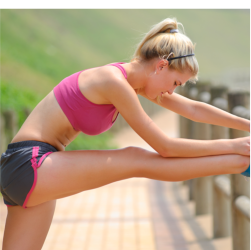While you can keep track of your walking time by manually writing down the minutes walked in a journal, it’s a difficult way to track your walking fitness plan, if you exercise throughout the day. Instead, use technology to track steps walked instead of time spent exercising. There are several different ways to track steps walked:
Track Your Walking Fitness with Accelerometers
An accelerometer differs from a pedometer in that it measures a mechanical motion (walking) against a frame of reference and converts it into an electronic signal outputted as steps taken, among the other data collected, such as calories burned and distance walked; one of the leaders in this wearable technology is FitBit. Their products can also synch up with an app loaded on your computer, so you have an online journal of your activity.
Track Your Walking Fitness with Pedometers
Pedometers differ from accelerometers in the way they measure steps. They count the number of strides taken over time, meaning you have to input the length of your stride in order for them to accurately measure the number of steps taken. While not as accurate as an accelerometer, they are less expensive and you usually have to manually track your progress.
Track Your Walking Fitness with Online Journals
Applications and programs to track your walking fitness plan progress come in both free and paid versions. One free program from the website Spark People makes it easy to track nutrition, fitness and weight among numerous other things.
For a paid program, try Fitness Journal. For $3.95 per month, you can track the same information, plus a lot more, including when your walking shoes need replacing. It also allows you to journal your progress and creates various charts and graphs making it easy to see your progress. For a whole list of online tracking options, search “Online Fitness Journals”.
Track Your Walking Fitness with Smartphone Apps
Applications that run on your smartphone is another way to track your walking fitness. While there are many applications you can use, one of the most popular one for the iPhone, Android or Blackberry is MapMyRun. With this app, it uses your smartphones’ GPS capability to not only track steps taken, but duration, distance, calories burned and even the route you took on a map. It also has the capability to journal your progress online.
With so many walking fitness tracking tools available, there really isn’t a reason to not start a walking fitness plan. Buy either a pedometer or accelerometer and start documenting your walking accomplishments today. Before you know it, you will be at goal.
If you’d like to get more out of your walking for fitness plan, check out the “Guide to Setting Your Walking Fitness Goals” for more in depth knowledge on the subject of walking for fitness. While you’re there, be sure to sign up for the free MyFitnessNut.com Newsletter to be kept up to date on the latest health and fitness topics.









